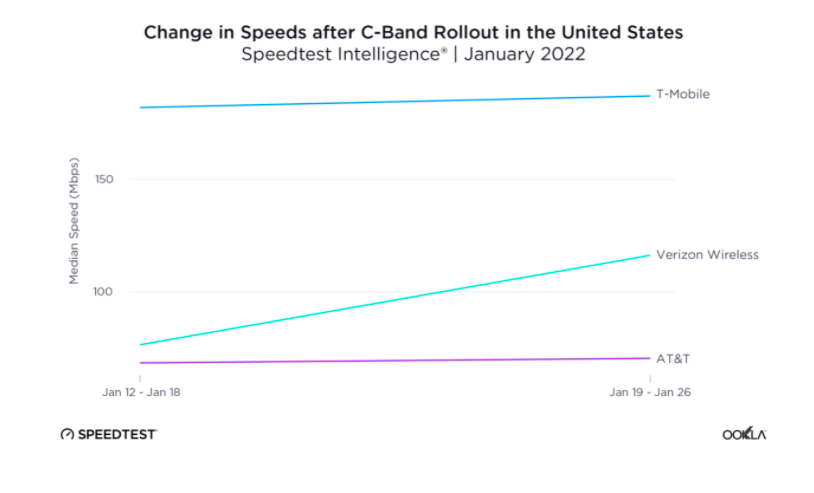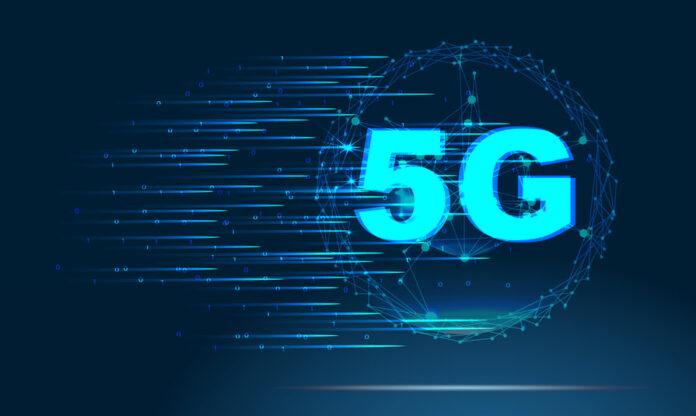‘C-Band could change who’s going to be fastest in the U.S.,’ benchmarking company says
The turn-up of C-Band spectrum by AT&T and Verizon is already having an impact on 5G download speeds, according to new data from Ookla, and could upend the relative market positions of who leads its 5G speed rankings.
Verizon’s big bet on C-Band spectrum seems to already be paying speed dividends. While Ookla reported that the median 5G download speed across all operators rose 13% week-over-week with the launch of C-Band, Verizon saw the biggest gains: A 50% leap in performance, accelerating to 116.29 Mbps from a median 5G download speed of 76.51 Mbps in the week prior.
Verizon made both the largest investment in C-Band spectrum as well as the widest-ranging deployment up-front — the carrier prioritized the purchase of the first-available C-Band tranche and covered 90 million potential customers on its first day of C-Band operations.
“This massive improvement in speed shows the power of Verizon’s widespread deployment of C-band spectrum and C-band’s ability to deliver fast speeds,” the benchmarking company said in a blog post about its analysis, adding, “If the trend in increased speed continues, Verizon Wireless could challenge T-Mobile for fastest download speed” in its next quarterly report.
Meanwhile, AT&T is taking a more measured deployment approach, as much of the spectrum it bought won’t be available until 2023. AT&T’s initial C-band turn-up was selective, covering parts of eight metro markets. It coincided with a slight increase in median 5G speeds of about 1%, Ookla said: AT&T moved from 68.43 Mbps to 70.46 Mbps in time with its C-Band launch.
Although T-Mobile US didn’t launch new spectrum at that time, it did turn up a new 5G carrier aggregation feature on the same day, Ookla reported — so it, too, saw a slight bump in speeds of around 1%, rising from 181.99 Mbps median download speed to 187.11 Mbps.

Ookla also specifically looked at Speedtest data from five markets where both Verizon and AT&T lit up C-Band spectrum: Austin, Forth Worth and Houston, Texas; Chicago, Illinois; and Jacksonville, Florida. AT&T saw a 12% week-over-week 5G speed increse in Austin, while Verizon saw a 21% boost in Fort Worth and 28% acceleration in Jacksonville. However, the effects weren’t necessarily consistent: Ookla said that other than those data points, 5G speeds in the five markets were relatively flat, and in Houston, its data showed a dip in speed for Verizon compared to the previous week.
Ookla’s data is device-based and crowd-sourced, and the company noted that it saw a “large increase” across the board in consumer running speed tests — especially Verizon customers, who may have tested more because they saw the “5G UW” icon pop up on their phones for the first time. Verizon is marketing both its mmWave and C-Band-based 5G as “Ultra Wideband”.

